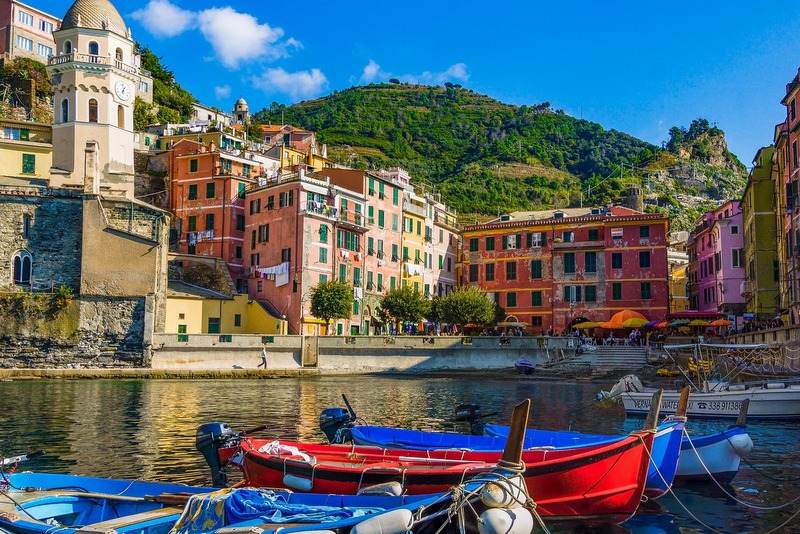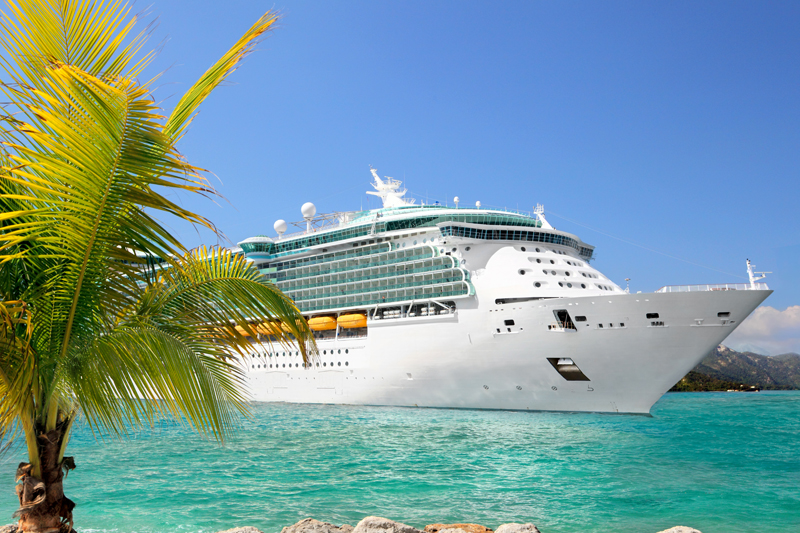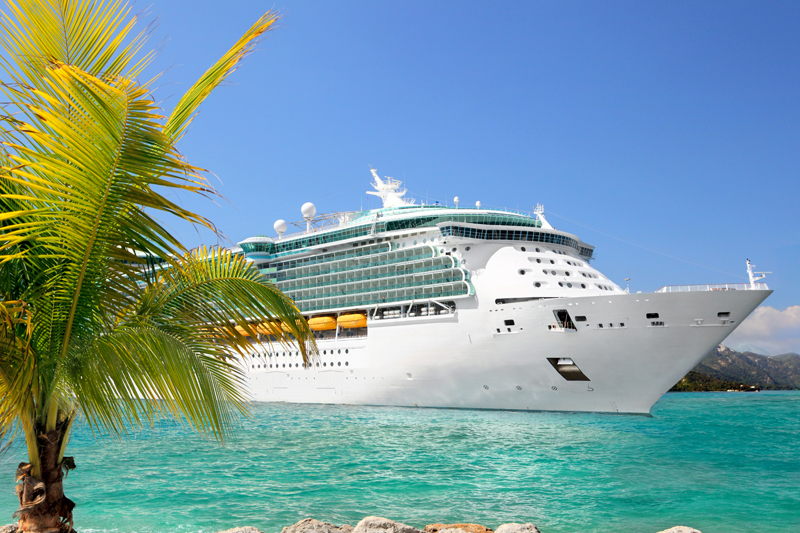10 Great Tips For Your European Cruise

It’s easy to see why European cruises are so popular this year. European destinations offer a rich tapestry of cultural, adventure and learning experiences for travelers of all ages. Since you only unpack once, cruises are an easy and hassle-free way to explore multiple European countries on vacation as well.
If you’re planning to take a cruise vacation in Europe, here are ten tips to help you prepare for your trip.
1. Make Copies Of Key Documents. It’s important to make copies of documents such as your passport, medical cards, travel itineraries and boarding passes, and other items. Keep copies with you in several places and leave one set of copies at home with someone who could fax them to you if needed. Also keep a copy of your credit card numbers and contact information with you, just in case one or all of your cards are lost or stolen. Leave your list of credit card numbers in the safe in your room. If you are planning to bring along an ATM card on your cruise, make sure you have this information as well.
2. Research International Cellular Service Plan Options. Check with your cellular service provider to learn about international cell service plans, what’s included and when the plan needs to be activated. Many plans offer international voice, data and text service for a relatively reasonable daily charge. If you need to stay connected while you’re away, this is the best way to go. If you’re don’t plan to purchase and international plan, put your phone on airplane mode and operate it on Wi-Fi only. Alternatively, some international travelers choose to unlock their phone and purchase a local SIM card when they arrive it Europe. It’s also possible to make cheap international calls with apps like Skype, Viber and WhatsApp.
3. Call Your Credit Card Companies. Credit cards are one of the safest ways to pay for items while you are traveling. Call your credit card companies several days before departure to let them know that you'll be traveling, your dates of travel, and the destinations that you will be visiting. By contacting the credit card companies in advance to make sure they are aware of your travel, you’ll ensure that your credit card will be available for use and your purchases will go through. Make sure to include countries you’ll be connecting through, just in case you miss your connecting flight and have to stay there overnight.
Credit card companies monitor your charges and if anything out of the ordinary appears, such as your card number being used in Europe, the credit card company will refuse the charges and put a lock on your account. Once this happens, you will not be able to use the card for purchases. While contacting your credit card companies, check to see if they impose any additional fees for using your credit cards internationally. If so, make a list of the charges for each card. You may want to apply for a credit card that does not impose international fees well in advance of your trip.
Be aware of the currencies and foreign exchange rates for every country to which you’ll be traveling. In some areas, it may be customary to add a 3-10% surcharge on any items purchased with a credit card. You may also find that some cards, such as Visa or MasterCard, are accepted more readily than others.
4. Contact Your Bank. If you're planning to bring an ATM card along to use on your European cruise, contact your bank in advance and let them know where you’ll be traveling. Banks will block ATM cards being used internationally unless they have received prior notification. Some banks may require a personal visit to authorize ATM cards for overseas use, so make sure to check in advance. Make sure to include countries you’ll be connecting through, just in case you miss your flight and have to stay there overnight. Check on the safety and availability of ATM outlets as well. It’s often wisest to withdraw money at a monitored bank location. These provide you with the most protection and are less likely to be units that have been compromised with skimmers. It can also be helpful to arrive in Europe with some local currency, which can often be obtained through your bank. Having a limited amount of local currency can be particularly helpful if you’re staying at a hotel before your cruise and want to make sure you’re set in case your ATM card doesn’t work.
5. Arrive A Day or Two Early. Getting to a European cruise port often involves flight connections. Delays and flight cancellations can be quite common these days. When snafus like that happen, guests (and their luggage) can sometimes miss the ship. Arrive at your embarkation port at least a day or two in advance to allow for potential delays. In addition, major attractions in departure cities like Barcelona, Amsterdam and Venice are tough to pack into just one day. So, plan to spend some extra time there and explore.
6. Plan Your Shore Excursions In Advance. Exploring vibrant cities, taking in historic sites and enjoying authentic local experiences are the major reasons vacationers come to Europe. That’s what the cruise experience is all about, so spend time researching your ports of call and planning your shore excursions. Some large ship shore excursions can be expensive, so make a budget and research your options. Make advance reservations for large ship excursions and private tours in key areas, as popular choices can sell out in advance.
7. Check On The Weather. Rather than make assumptions about what you think the temperatures will be like in your European ports of call, check online several days in advance. While forecasts can vary, it’s often helpful to know if there’s a streak of blazing hot weather rolling in or if your ports are expected to get lots of rain while you’re there. Being informed will help you to pack correctly and have the right clothes on hand for your European cruise.
8. Purchase Power Adaptor Plugs. If you’re planning to stay in a European hotel pre- or post-cruise, you will probably need to purchase a power adaptor or two to plug your devices into the hotel’s power outlets. While some hotels have USB ports in their rooms, many others haven’t gotten there yet. Also plan to bring a back-up battery pack to recharge cell phones and other mobile devices when you’re out on long full-day tours and excursions.
9. Get A Translation App Or Pocket Guide. European cruises typically visit ports in multiple countries. Often, you’ll find that you’ll need to have knowledge of several languages on your trip. Consider downloading Google Translate before you depart on your trip and make sure to download the languages you’ll need while you still have free Internet service. There are also a variety of foreign language apps available or if it’s easier, purchase one or more pocket translation guides to bring on your trip.
10. Invest In Trip Insurance. Trip insurance is a wise purchase, particularly for a European cruise. Trip insurance will protect your vacation investment against flight cancellations or delays, a family illness, or other issues. Make sure you understand what is covered by the trip insurance policy you’re purchasing and read the fine print carefully. Trip insurance also provides coverage against lost or stolen items, although it typically doesn’t cover stolen cash. Travel insurance companies can also provide a travel concierge to help you in the event that you’re robbed, your baggage is delayed or lost, or if other unfortunate events occur.
If you’re planning to take a cruise vacation in Europe, here are ten tips to help you prepare for your trip.
1. Make Copies Of Key Documents. It’s important to make copies of documents such as your passport, medical cards, travel itineraries and boarding passes, and other items. Keep copies with you in several places and leave one set of copies at home with someone who could fax them to you if needed. Also keep a copy of your credit card numbers and contact information with you, just in case one or all of your cards are lost or stolen. Leave your list of credit card numbers in the safe in your room. If you are planning to bring along an ATM card on your cruise, make sure you have this information as well.
2. Research International Cellular Service Plan Options. Check with your cellular service provider to learn about international cell service plans, what’s included and when the plan needs to be activated. Many plans offer international voice, data and text service for a relatively reasonable daily charge. If you need to stay connected while you’re away, this is the best way to go. If you’re don’t plan to purchase and international plan, put your phone on airplane mode and operate it on Wi-Fi only. Alternatively, some international travelers choose to unlock their phone and purchase a local SIM card when they arrive it Europe. It’s also possible to make cheap international calls with apps like Skype, Viber and WhatsApp.
3. Call Your Credit Card Companies. Credit cards are one of the safest ways to pay for items while you are traveling. Call your credit card companies several days before departure to let them know that you'll be traveling, your dates of travel, and the destinations that you will be visiting. By contacting the credit card companies in advance to make sure they are aware of your travel, you’ll ensure that your credit card will be available for use and your purchases will go through. Make sure to include countries you’ll be connecting through, just in case you miss your connecting flight and have to stay there overnight.
Credit card companies monitor your charges and if anything out of the ordinary appears, such as your card number being used in Europe, the credit card company will refuse the charges and put a lock on your account. Once this happens, you will not be able to use the card for purchases. While contacting your credit card companies, check to see if they impose any additional fees for using your credit cards internationally. If so, make a list of the charges for each card. You may want to apply for a credit card that does not impose international fees well in advance of your trip.
Be aware of the currencies and foreign exchange rates for every country to which you’ll be traveling. In some areas, it may be customary to add a 3-10% surcharge on any items purchased with a credit card. You may also find that some cards, such as Visa or MasterCard, are accepted more readily than others.
4. Contact Your Bank. If you're planning to bring an ATM card along to use on your European cruise, contact your bank in advance and let them know where you’ll be traveling. Banks will block ATM cards being used internationally unless they have received prior notification. Some banks may require a personal visit to authorize ATM cards for overseas use, so make sure to check in advance. Make sure to include countries you’ll be connecting through, just in case you miss your flight and have to stay there overnight. Check on the safety and availability of ATM outlets as well. It’s often wisest to withdraw money at a monitored bank location. These provide you with the most protection and are less likely to be units that have been compromised with skimmers. It can also be helpful to arrive in Europe with some local currency, which can often be obtained through your bank. Having a limited amount of local currency can be particularly helpful if you’re staying at a hotel before your cruise and want to make sure you’re set in case your ATM card doesn’t work.
5. Arrive A Day or Two Early. Getting to a European cruise port often involves flight connections. Delays and flight cancellations can be quite common these days. When snafus like that happen, guests (and their luggage) can sometimes miss the ship. Arrive at your embarkation port at least a day or two in advance to allow for potential delays. In addition, major attractions in departure cities like Barcelona, Amsterdam and Venice are tough to pack into just one day. So, plan to spend some extra time there and explore.
6. Plan Your Shore Excursions In Advance. Exploring vibrant cities, taking in historic sites and enjoying authentic local experiences are the major reasons vacationers come to Europe. That’s what the cruise experience is all about, so spend time researching your ports of call and planning your shore excursions. Some large ship shore excursions can be expensive, so make a budget and research your options. Make advance reservations for large ship excursions and private tours in key areas, as popular choices can sell out in advance.
7. Check On The Weather. Rather than make assumptions about what you think the temperatures will be like in your European ports of call, check online several days in advance. While forecasts can vary, it’s often helpful to know if there’s a streak of blazing hot weather rolling in or if your ports are expected to get lots of rain while you’re there. Being informed will help you to pack correctly and have the right clothes on hand for your European cruise.
8. Purchase Power Adaptor Plugs. If you’re planning to stay in a European hotel pre- or post-cruise, you will probably need to purchase a power adaptor or two to plug your devices into the hotel’s power outlets. While some hotels have USB ports in their rooms, many others haven’t gotten there yet. Also plan to bring a back-up battery pack to recharge cell phones and other mobile devices when you’re out on long full-day tours and excursions.
9. Get A Translation App Or Pocket Guide. European cruises typically visit ports in multiple countries. Often, you’ll find that you’ll need to have knowledge of several languages on your trip. Consider downloading Google Translate before you depart on your trip and make sure to download the languages you’ll need while you still have free Internet service. There are also a variety of foreign language apps available or if it’s easier, purchase one or more pocket translation guides to bring on your trip.
10. Invest In Trip Insurance. Trip insurance is a wise purchase, particularly for a European cruise. Trip insurance will protect your vacation investment against flight cancellations or delays, a family illness, or other issues. Make sure you understand what is covered by the trip insurance policy you’re purchasing and read the fine print carefully. Trip insurance also provides coverage against lost or stolen items, although it typically doesn’t cover stolen cash. Travel insurance companies can also provide a travel concierge to help you in the event that you’re robbed, your baggage is delayed or lost, or if other unfortunate events occur.

Related Articles
Editor's Picks Articles
Top Ten Articles
Previous Features
Site Map
Content copyright © 2023 by Nancy Schretter. All rights reserved.
This content was written by Nancy Schretter. If you wish to use this content in any manner, you need written permission. Contact Nancy Schretter for details.







